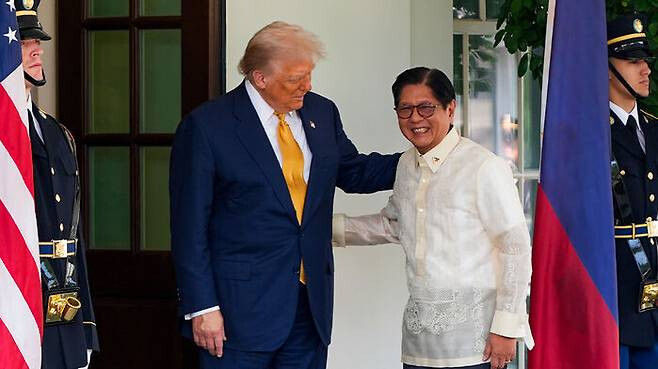
Washington, D.C. – U.S. President Donald Trump and Philippine President Ferdinand Marcos Jr. held a summit at the White House on July 22nd (local time), reaching significant agreements in the areas of trade and military cooperation. This is expected to further strengthen relations between the two countries and significantly impact regional dynamics.
Under the new trade agreement, the United States will apply a reciprocal tariff rate of 19% on products from the Philippines starting August 1st. This is a 1 percentage point reduction from the 20% proposed by President Trump in a letter to President Marcos on July 9th, but it is higher than the 17% tariff rate announced in April. In contrast, the Philippines will completely open its market to U.S. products with zero tariffs. The Trump administration has recently concluded similar trade agreements with Indonesia and Vietnam, strengthening economic ties with key Southeast Asian nations. Notably, in the case of Indonesia, the U.S. secured promises for large-scale purchases of American oil, natural gas, aircraft, and agricultural products, along with the elimination of tariffs on over 99% of items. Additionally, a high tariff of 40% was agreed upon for indirect exports to the U.S. via China.
In the military cooperation sector, the two nations re-emphasized their commitment to strengthening military collaboration. The U.S. and the Philippines have maintained a continuous alliance based on the Mutual Defense Treaty signed in 1951. In 2023, under the Enhanced Defense Cooperation Agreement (EDCA), the U.S. gained additional access to four military bases in the Philippines, including strategically vital locations adjacent to the Taiwan Strait. This allows the U.S. to rapidly deploy and intervene militarily in the event of a South China Sea conflict. Furthermore, the two countries are enhancing their combined operational capabilities through large-scale joint military exercises such as "KAMANDAG." The Philippines is also increasingly strengthening maritime security cooperation with Taiwan in response to territorial disputes in the South China Sea.
Meanwhile, during the summit with President Marcos, President Trump mentioned his plans for a meeting with Chinese President Xi Jinping, stating he would visit China "probably in the not-too-distant future." This aligns with speculation that President Trump is highly likely to visit China or hold talks with President Xi during the Asia-Pacific Economic Cooperation (APEC) Summit in Gyeongju, Korea, in late October this year. The South China Morning Post (SCMP) previously reported that Trump might visit Shanghai or other regions to differentiate it from his 2017 Beijing visit. Although U.S.-China relations have experienced fluctuations due to high tariffs, both sides have recently sought to stabilize relations through a preliminary trade agreement, and this summit is seen as an extension of these efforts, demonstrating a strong desire for engagement from both sides.
[Copyright (c) Global Economic Times. All Rights Reserved.]






























